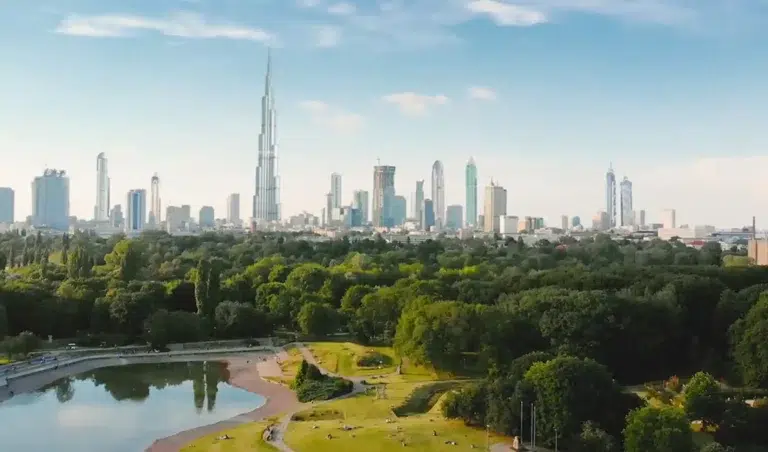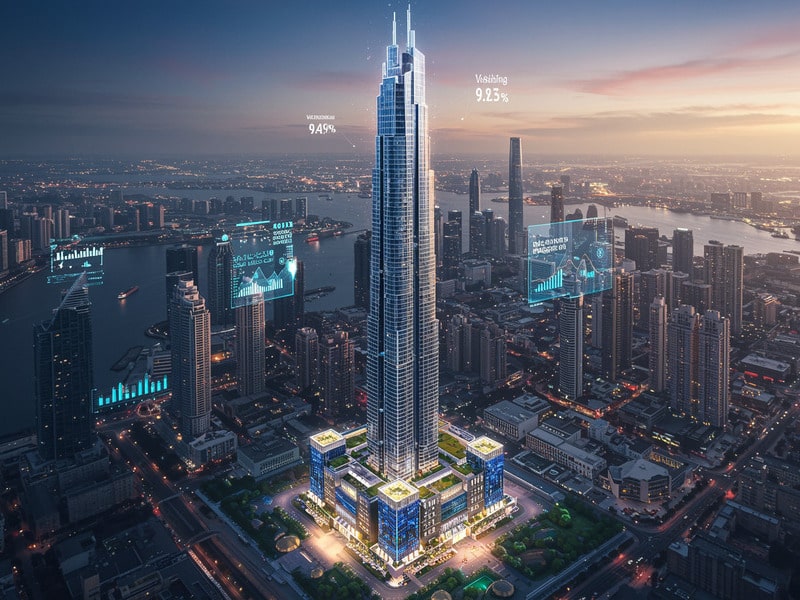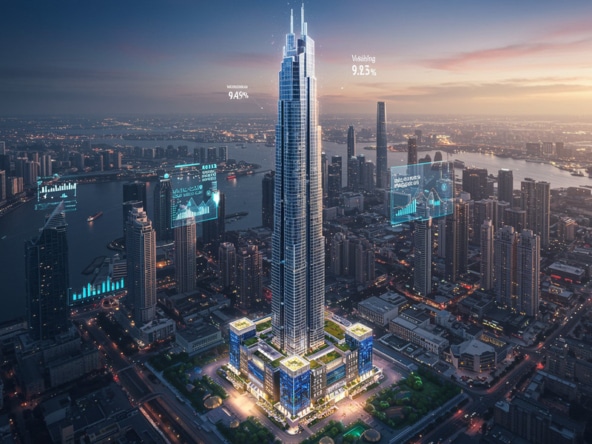Dubai 2040 at a glance
- “20-minute city” vision: five walkable hubs where daily needs are reachable by foot, bike, or transit.
- Greener city: major uplift in greenery in Dubai via parks, green corridors, and tree-lined streets.
- Nature first: large portions of the emirate reserved as protected rural/natural areas.
- More coast to enjoy: big expansion of public beaches, mangroves, and seaside promenades.
- Showpiece projects: Hatta waterfall-style attractions & cable car; Saih Al Salam Scenic Route with soft-adventure and future air taxis.
If you’re wondering “does Dubai have greenery?”, “is there greenery in Dubai?”, or “is there any greenery in Dubai?”—the plan says yes, and much more is coming.
What “greenery Dubai” means in practice
1) Five hubs & the 20-minute lifestyle
- Growth concentrates into five urban centres linked by transit.
- Schools, clinics, parks, retail, and offices are grouped so travel is shorter—and cleaner.
- Streets get wider sidewalks, shade, and safer crossings to boost Dubai green spaces use year-round.
2) Green corridors & urban forestry
- A continuous network of green corridors will connect communities to parks, beaches, and transit.
- Dubai green space care includes choosing hardy, drought-tolerant trees, drip irrigation, and smart soil prep for cooler microclimates.
- Expect pocket parks beneath towers, shaded cycling spines, and planted “cool lanes” near schools.
3) Blue–green infrastructure
- Storm-water landscapes (bioswales, rain gardens) slow runoff and irrigate greenery.
- Recycled water and moisture sensors make irrigation efficient—vital for a desert city.
- Restored mangroves protect coasts, capture carbon, and create fresh “green places in Dubai” to explore.
4) Mobility of the future
- Air taxis and cable cars are planned as connectors for hard-to-reach natural areas and tourist circuits.
- Cycle networks and last-mile shuttles integrate with metro/bus for door-to-door trips.
Destination projects that redefine “Dubai greenery”
Hatta: mountains, cable car & waterfall-style attractions
- A cable car will carry visitors from Hatta Dam area up to a mountain summit for sweeping views.
- Hatta Waterfalls: a landscaped, river-park concept that creates a natural-style waterfalls in Dubai experience (in a mountain setting), paired with walking routes, picnic decks, and eco-lodges.
Saih Al Salam Scenic Route: low-impact adventure
- A desert-lakes district with kayaking, riding trails, hot-air ballooning, and air-taxi access.
- Eco-stays, stargazing decks, and a gentle footprint keep the landscape front and center.
Countryside & rural master plan
- Curates vast areas—Al Marmoom, Lehbab, Al Faqa, Al Aweer and more—for eco-tourism, farms, and cultural sites while conserving wildlife corridors and archaeology.
Where to find greenery in Dubai today (and tomorrow)
- Mangroves & wetlands: boardwalks and bird hides for family-friendly nature.
- Community parks: large destination parks plus pocket parks embedded in new districts.
- Golf & garden communities: places like Al Barari, Jumeirah Golf Estates, Emirates Hills are showcases of Dubai greenery and landscape design.
- Beach promenades: expanded walking/cycling paths shaded with palms and shelters.
Related searches people use: greenery in dubai dubailandscapes.com, greenery in dubai gulfwonders com (both reflect growing interest in landscaping and maintenance know-how).
Climate comfort: how the city beats the heat
- Shade first: layered canopy (trees + structures) over sidewalks, play areas, and transit stops.
- Cool surfaces: high-albedo pavements and permeable materials reduce heat build-up.
- Misting & water features: judicious use in plazas—balanced with water-wise design.
- Building codes: orientation, glazing, insulation, and district cooling improve comfort and cut energy use.
Health, inclusion & community
- Green prescriptions: parks integrated with cycling loops and fitness stations for daily movement.
- Inclusive design: step-free routes, tactile paving, and sensory gardens.
- Community gardens: allotments and composting hubs bring neighbors together and reduce waste.
Real-estate angle: what to look for
- Proximity to green corridors (5–10 min walk).
- Landscape maturity: bigger canopy = cooler summers and higher curb appeal.
- Sustainability tech: greywater reuse, solar shading, EV charging, recycling rooms.
- Operations: evidence of Dubai green space care—soil health, efficient irrigation, and seasonal planting plans.
Sample 24-hour “green city” itinerary
- Morning: shaded cycle along a green corridor → coffee at a park pavilion.
- Mid-day: tram/metro to a beach promenade with mangrove lookout.
- Afternoon: cable-car ride in Hatta; stroll to the waterfall-style terraces.
- Evening: desert-lakes sunset, then a stargazing deck on the Saih Al Salam Scenic Route.
Quick FAQs
Q: Will there really be more greenery in Dubai by 2040?
A: That’s the core goal—more parks, green corridors, and protected natural areas. The plan directly addresses the question “does Dubai have greenery?” with measurable increases.
Q: Where can I see the best green places in Dubai now?
A: Head for mangrove boardwalks, large destination parks, Al Marmoom Desert Conservation Reserve, and garden communities; new Dubai green spaces are rolling out in multiple districts.
Q: Are the “natural waterfalls in Dubai” actually natural?
A: In Hatta they’re designed as waterfall-style features within a larger mountain-park landscape—built to feel natural while using water-wise systems.
Q: How will all this greenery be maintained long-term?
A: Through smart irrigation, recycled water, hardy plant palettes, and professional green space care programs baked into community service plans.
Q: What’s the benefit for homeowners and tenants?
A: Cooler streets, healthier air, better walkability, and typically stronger demand for homes near parks and corridors—hallmarks of the green future Dubai is building.



